This website uses cookies so that we can provide you with the best user experience possible. Cookie information is stored in your browser and performs functions such as recognising you when you return to our website and helping our team to understand which sections of the website you find most interesting and useful.
Our history
From an online phone directory to one of the most important players on the Master Data Management market. An exciting journey that is by no means finished.
Goldright has emerged from MUM and we launch the new and improved Goldright Enterprise Suite. So MUM 7.0 has become Goldright 8.0.
The relationships with our customers are very good and long-standing. This is because Customer Success Management was already a matter of course for us, even before the term actually existed. We decided to reposition MUM. This is the birth of Goldright.
From now on, views and templates are implemented task-specifically in MUM. Depending on the task at hand, users can dynamically switch between specific views and templates, greatly simplifying and facilitating work.
Even if it corresponds to the general standard in web applications, the cumbersome transfer of extensions or optimizations from the test system represents an unnecessary hurdle. To eliminate this detour, we now use the transportation layer, which enables us to make changes at the push of a button and transfer them to the live system. For this purpose, these configuration changes are automatically logged by the system and saved as packages, so that they can then be easily rolled out on the productive system.
We expand MUM to include inline editing. This enables the functions of a spreadsheet in the web browser and now exports for mass changes or calculation logic are a thing of the past. All this happens immediately, without having to leave the application.
MUM appears in version 7.0 and, for the first time, has a new and modern Vaadin-based user interface. This enormously increases usability; the adaptability and customer-specific business logic in the user interface are made significantly easier.
Vinci becomes a MUM customer and uses the MDM for the employee onboarding and exiting process. At the same time, Vinci is the first customer to use MUM in the cloud. In addition, we developed MUM significantly and now offer for the first time RESTful Web Services.
Thüga Holding GmbH & Co. KGaA places their trust in us and becomes a MUM customer. In the same year, we complete the preparations and create our first customer-independent version – MUM has thus become standard software.
Now comes the business logic layer and with it a validation and services API for creating individual business logic. Customer-specific validation, calculations and logic can easily be created and combined with workflows. This portrays a milestone in user friendliness.
2014 is also an important year for our customers, as we gained two strategic customers in Bühler AG and ZF Friedrichshafen AG.
Three new engines are applied simultaneously, in order to continue to suitably meet the needs of our customers.
- Charting Engine for the automated creation of org charts
- Data Governance Engine to automate authorization structures
- Typed web services to replace generic web services
We integrated BPM (Business Process Management) to order to be able to display and edit workflows with the help of a graphical user interface. This makes it immensely easier to manage workflows and we have used the latest BPMN ever since. In addition, we now rely on dynamic authorization systems and users can generate reports and graphical evaluations themselves using a newly available dashboard.
The first customer receives a standards-based interface to SAP and the Enterprise Integration Layer significantly facilitates data exchange.
We introduce generic web services for data exchange with source and target systems, which greatly facilitates their integration. In the same year, DORIS becomes MUM (the mother of all data).
With the use of the gWT (google Web Toolkit) to create a modern browser-based user interface, we replace the previously existing JSP-based frontend.
To increase usability, users can now apply favorites. To do this, you save data and/or search filters according to your personal needs and can reuse these –sometimes highly complex– queries with a mouse click.
The caching of unfinished datasets is now also possible. This means that incomplete data collection can be saved temporarily and completed at a later point in time.
First approval process – the Academy of Sciences needed approval functionalities to check and validate content based on the principle of multiple-assessor verification. The AkademIS annual report was then generated automatically using the reporting engine (BIRT) based on this information.
Andritz AG is now also using DORIS, originally in order to manage servers and software versions. Organizational structures and the mapping of all mergers and acquisitions are added later. This is only possible because the application was based on a flexible data model from the very beginning.
This first product becomes DORIS (which stands for “Dynamisches Organization Informationssystem”), which is installed at the Austrian Academy of Sciences for the administration of research results.
The first steps in MDM with an order from the Austrian Trade Union Confederation – we create an online telephone book. Of course, this makes no sense without clean and consistent data.
Schedule your call now!
Optimizing a business and empowering data transparency is a constantly evolving journey. Let’s do it together.
Optimizing a business and empowering data transparency is a constantly evolving journey. Let’s do it together.
